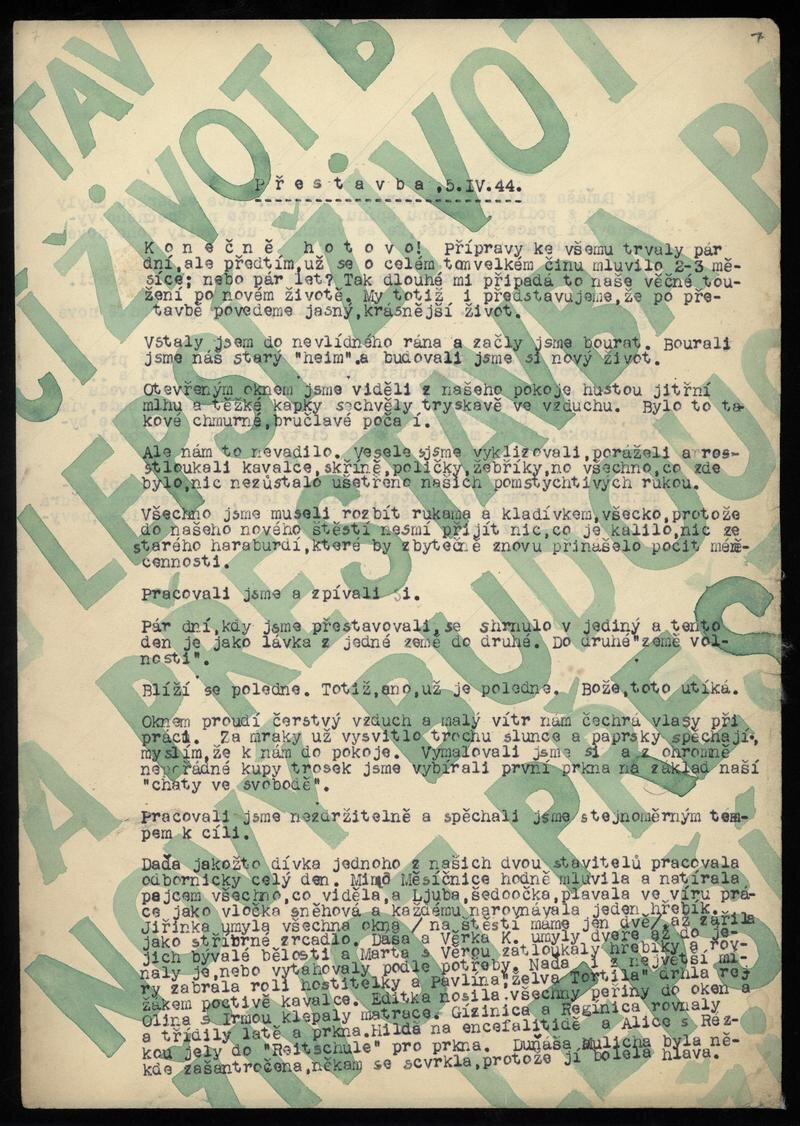
WHAT IS KLEPY?
Klepy is an underground handmade magazine – or zine – that was published from August 1940 to October 1941 by a group of Jewish kids and young adults from the southern Czechoslovakia town of České Budějovice who would eventually all be deported to Terezin. Klepy means “Gossip” in Czech.

WHY WAS KLEPY CREATED?
Shaken by the 1939 Nazi invasion and subsequent restrictions thrust upon all Jews, Klepy’s contributors, led by 16-year-old Rudolf Stadler, founded the magazine as an outlet for humor, solidarity and resistance.
“We are to prove that we still possess a sound mind and a sense of humor, that we aren’t ruined by the difficulty of the times to the state of not being able to spend our respite with that of higher value, though be it only jokes and humor at times.” – Rudolf Stadler


WHO WROTE FOR KLEPY?
Barred from most parts of town in 1939 and expelled from their schools in 1940, the Jewish teenagers and young adults contributed to Klepy for about 14 months before the magazine was halted and were deported to Terezin along with the town’s approximately 900 Jews in 1942. Most of České Budějovice’s Jews didn’t survive the Holocaust.

-

Rudolf “Excavator” Stadler
(b. 9/18/24; d. 1945 in Dachau): Klepy’s founding editor-in-chief saved the magazine by giving copies to a non-Jewish housekeeper before being deported to Terezin in 1942. Stadler was murdered in Dachau in 1945. After the war, the housekeeper gave the magazine copies to Stadler’s sister Ilsa.
-

Josef “Long Peter” Fris
(b. 1919, died in the Holocaust): Klepy contributor was deported to Terezin in 1942.
-

Rudolf “Fulin” Firth
(b. 1924, died in the Holocaust) : Klepy illustrator was deported to Terezin in 1942.
-

Jan Freund
Klepy contributor, along with his brother Karel, helped turn a small plot of land where Jewish kids were permitted to congregate into a de-facto community center. Freund, who started with the publication as a 10-year-old, survived the Holocaust and eventually emigrated to Canada.

WHERE WAS KLEPY PUBLISHED?
“There are people who judge their neighbors on their persuasions and opinions. I only distinguish between two kinds of people: good people and bad people.” – “Faughton”
Restricted from almost all parts of town by 1940, Jewish adolescents and young adults were permitted to meet and play on a small plot of land near the town’s Vltava River, also known as “the swimming place.” Brothers Jan and Karel Freund, turned the shack on the site into a community center where much of the magazine was eventually produced.
"We don’t deceive ourselves thinking that enlightenment and humanity could ever be a radical cure to the ills of our nation. As our homeland is without borders, so is our suffering without borders." – “Pinsker”


WHAT DID KLEPY’S CREATORS WRITE ABOUT?
“The world is ugly, rotten and wrought with power. We have one lifetime only, a single shard of eternity. And that we have to struggle against the world.” – “R. D. O. H.”
Klepy started off in August 1940 as a three-page pamphlet with jokes and poems, and early issues would largely contain humor pieces, crossword puzzles and brain teasers. As the impact of the restrictions against Jews set in, however, the magazine evolved to include editorials, typed stories about Jewish forced labor, and lessons in Jewish history and religion. Published approximately every three weeks, the issues would grow to be as large as 40 pages and would be passed around to adults to read.


“The human race, and we with it, is on an immeasurably long journey to perfect humanism. This is why we must let go of the false idea that through our dispersal we are fulfilling a clear-sighted vocation, an honorary office which we would rather give up if only the world could be rid of the insult, ‘Jew...’.”

























